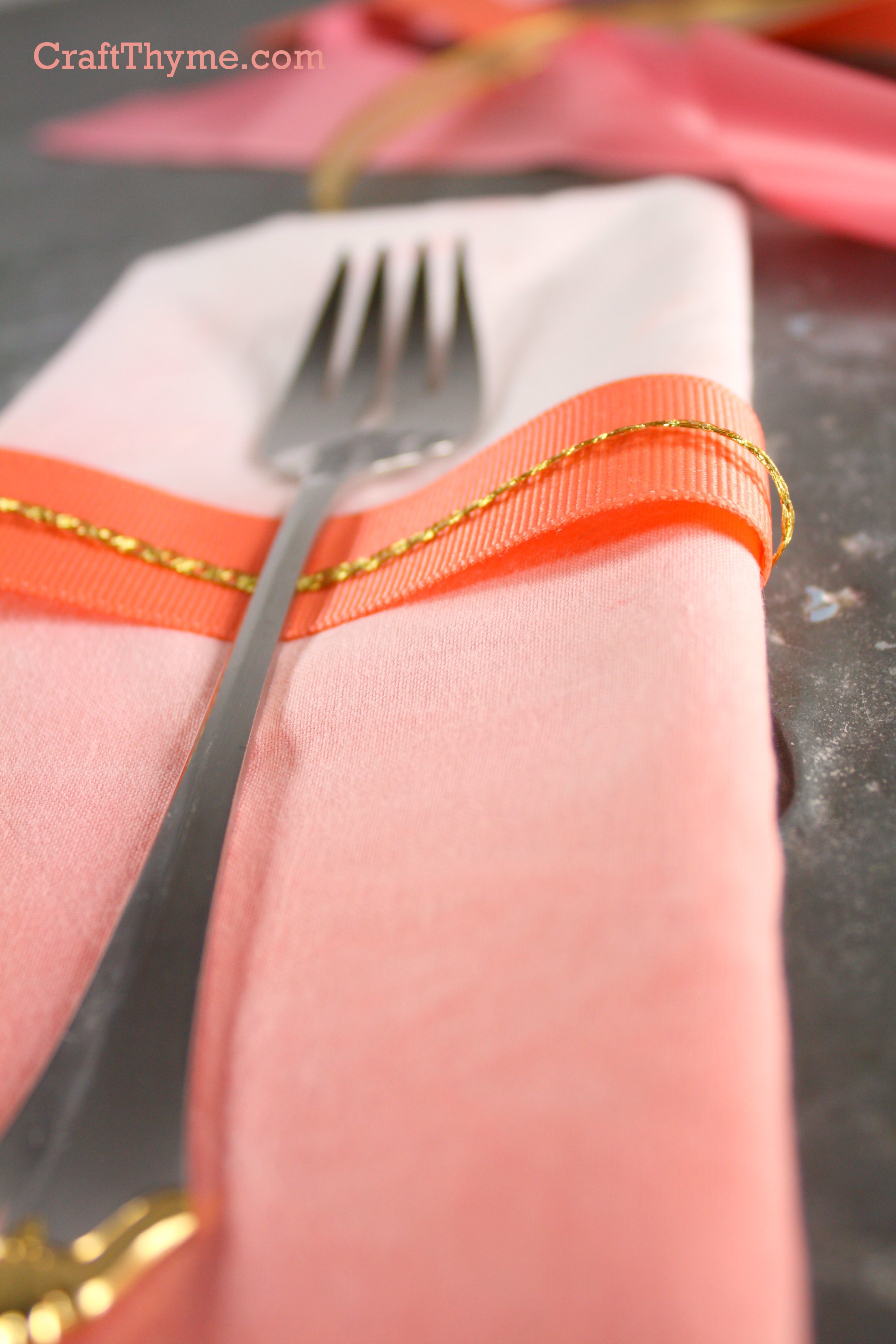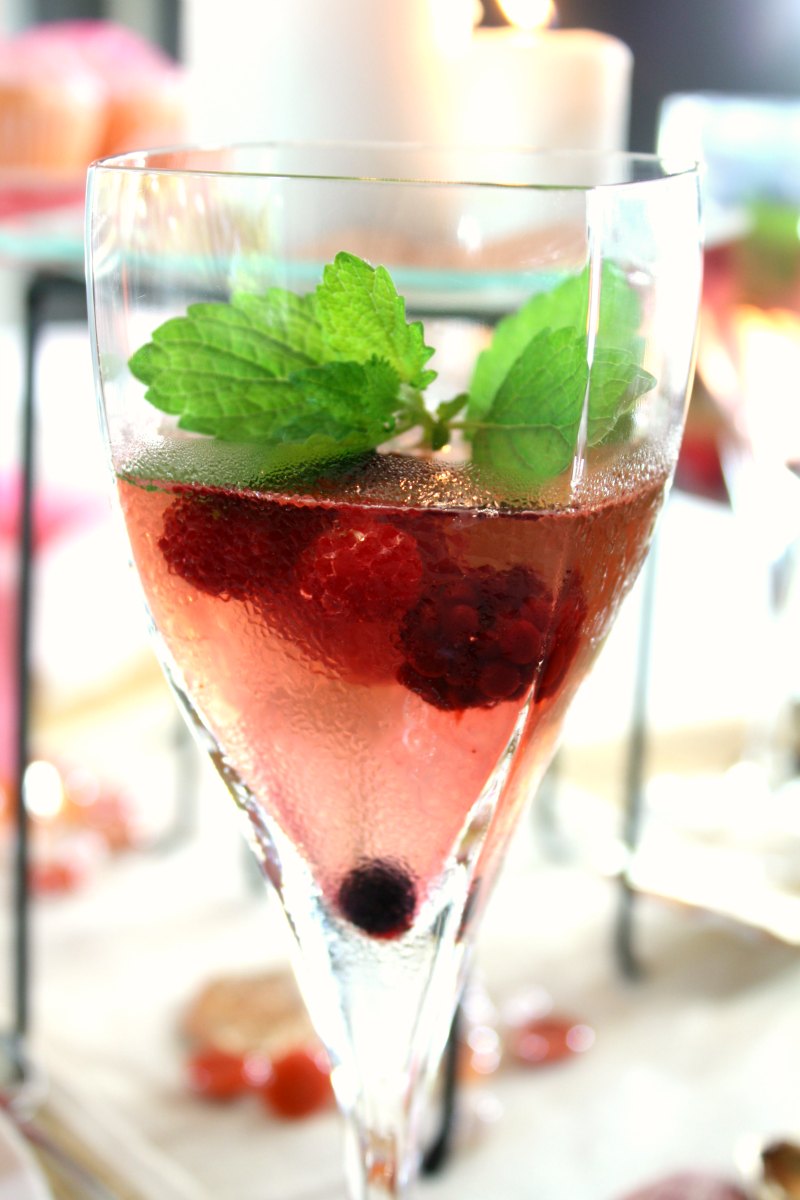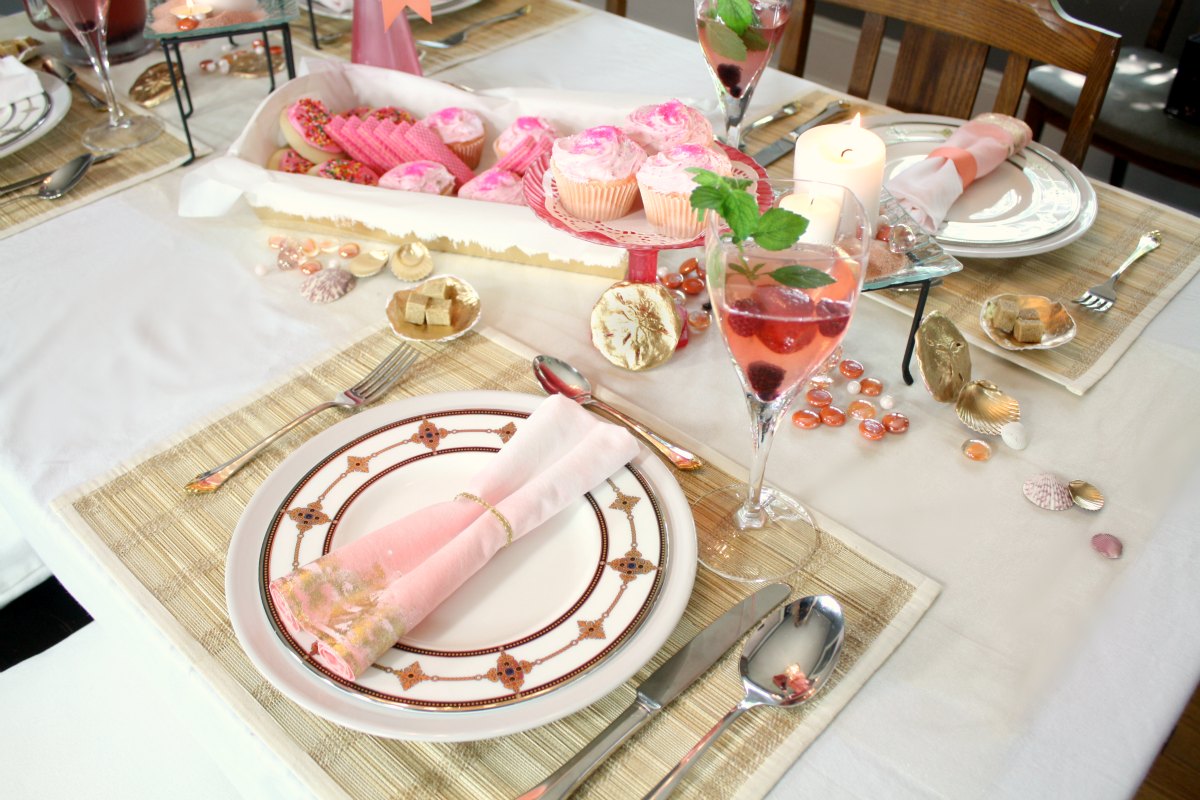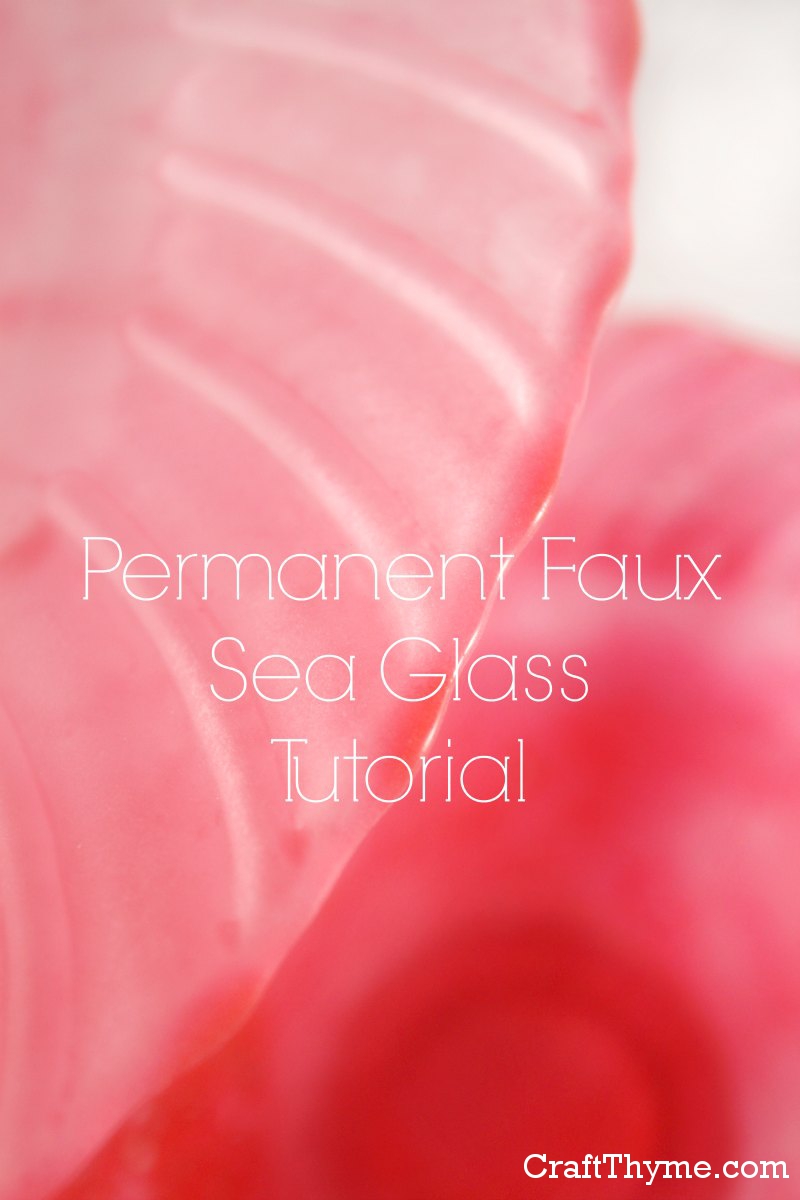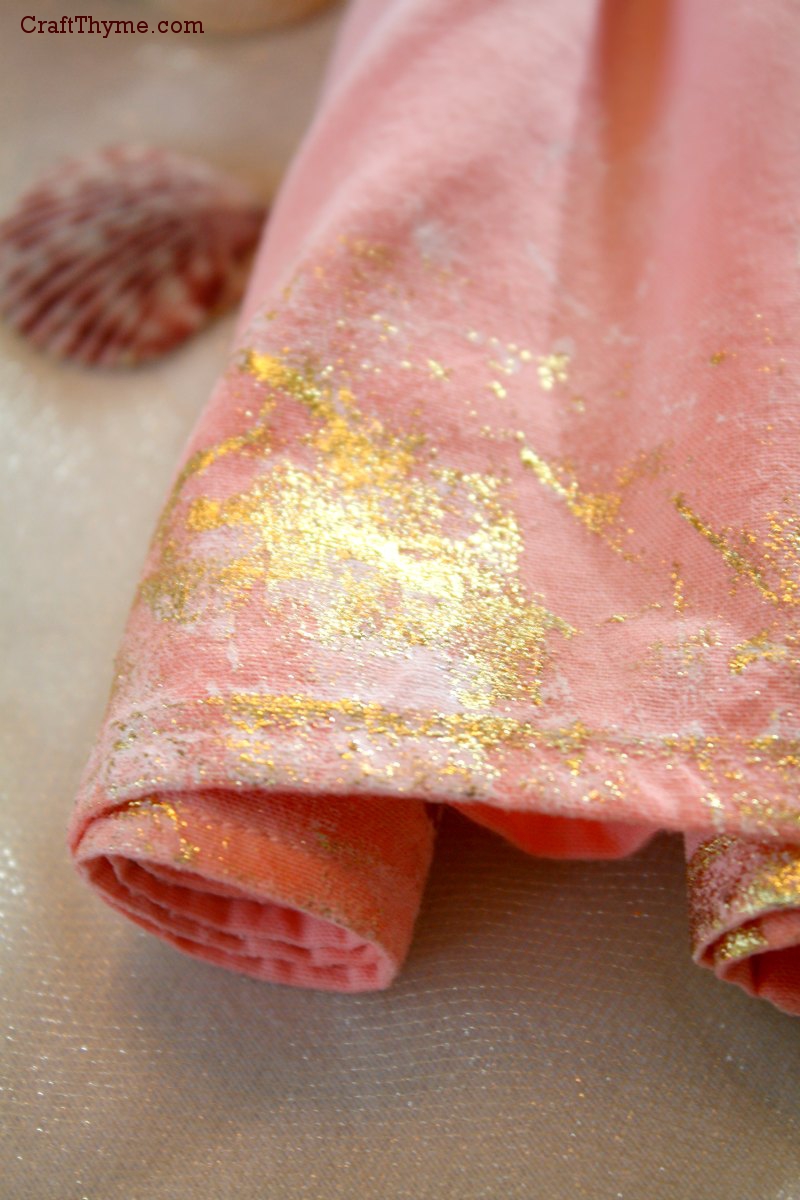
There are plenty of metallic fabric paints on the market, and while they excel at adding shimmer they don’t have that rich metallic leaf look that is so popular on various commercial t-shirts. It took a little bit of research but I finally figured out how they get gold leaf on fabric and keep it washable. Allow me to introduce you to Gold Foiling Fabric.

Supplies
Fabric -This fabric had been ombre dyed using this tutorial
Transfer Adhesive* (Full disclosure about this affiliate link: I wasn’t thrilled with the Martha Stewart Transfer Glue I used here. I might try a different brand. The important point is that is is tacky when set and stays adhered through gentle washing. Maybe it was user error…)
Metallic Foil Sheets* (These are different than gold leaf. They are thicker and have a backing to the metallic portion)
Sponge applicator
Step 1: It’s Sticky
I wanted a random/worn pattern to my finished foil look so I put the glue at random and used varying thicknesses of glue. You can get a smoother finish by putting a nice, thick, even application of glue. You can even use a stencil and apply glue in a pattern. The important part is to get enough on that the glue quits soaking into the fabric and leaves an even coat on the top layer.
The directions will tell you how long to let the glue set. My suggestion is to lightly test with your finger. The glue should stick to your finger but not leave the fabric when set.
Step 2: Burnish and Repeat
Alright, I know this probably makes sense to everyone else, but put the shiny side up… You are gluing the backing to the fabric. That was one of my duh moments. To get a really good bond press the sheet into the glue. Then burnish the top of the foil with a precision instrument paint brush handle. Mostly because that was what I had laying around.
Slowly peel the foil from the fabric. The plastic sheet should peel off and the gold leaf effect remain. Leaving you with some nice shimmer like this.
These final napkins where used in my Summer Pink Lemonade Table Setting seen here.
Notes
I already mentioned one important point. Shiny-side up. When done I let mine sit for 24 hours to fully cure.
I did hand wash them and the gold stayed put. I believe it would hold up through a gentle cycle as well. I just wouldn’t put these napkins up to a BBQ or Crab leg challenge. But for a special occasion they work great.
It took a bit of practice to do a good application of glue and foil. If it is your first time I would suggest buying an extra sheet or two of foil to practice with. The napkins were completed after many trial runs that took to realize how to apply the glue and that burnishing helped.
Finally save your foil sheets if they have any left. The little flecks make for an interesting effect when pressed into glue
Enjoy these articles? Get periodic updates by joining my mailing list (no spam, no way, no how) or subscribing to my RSS feed.




